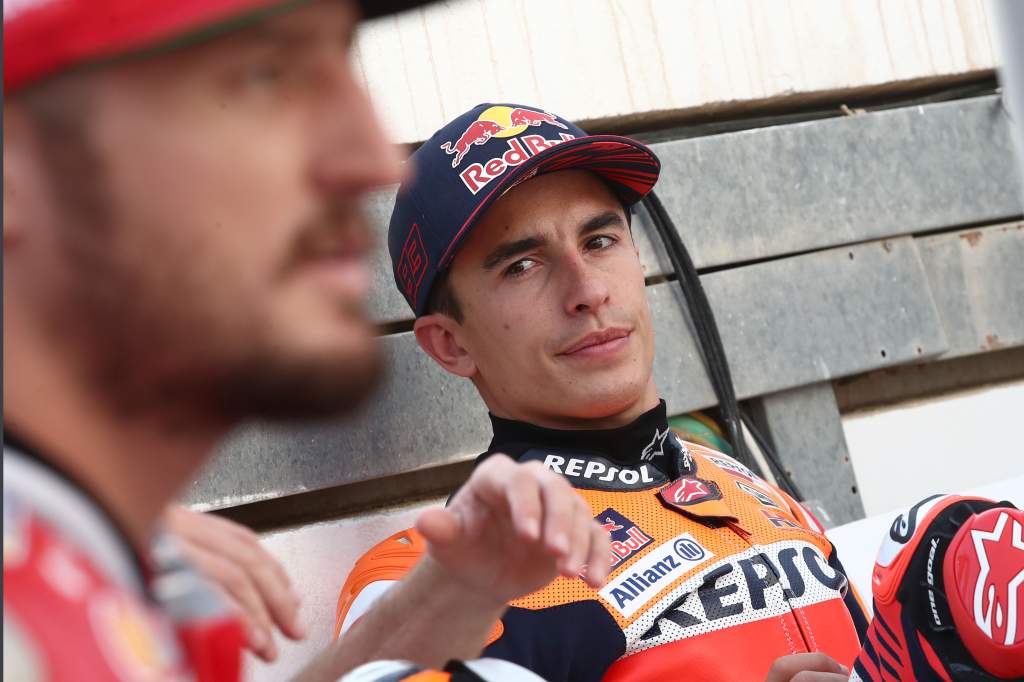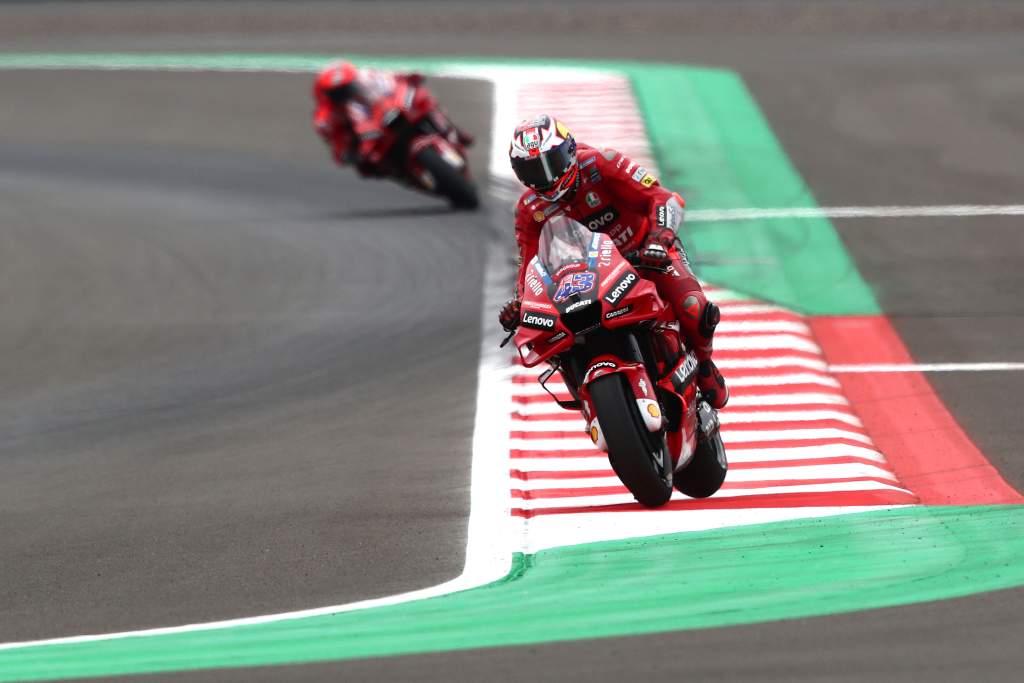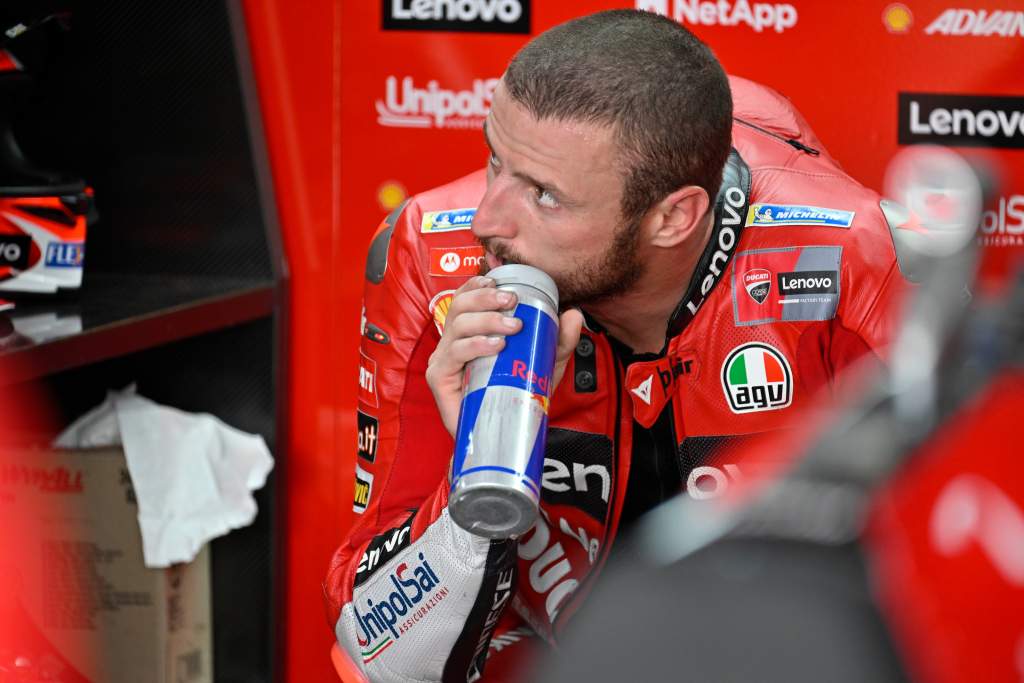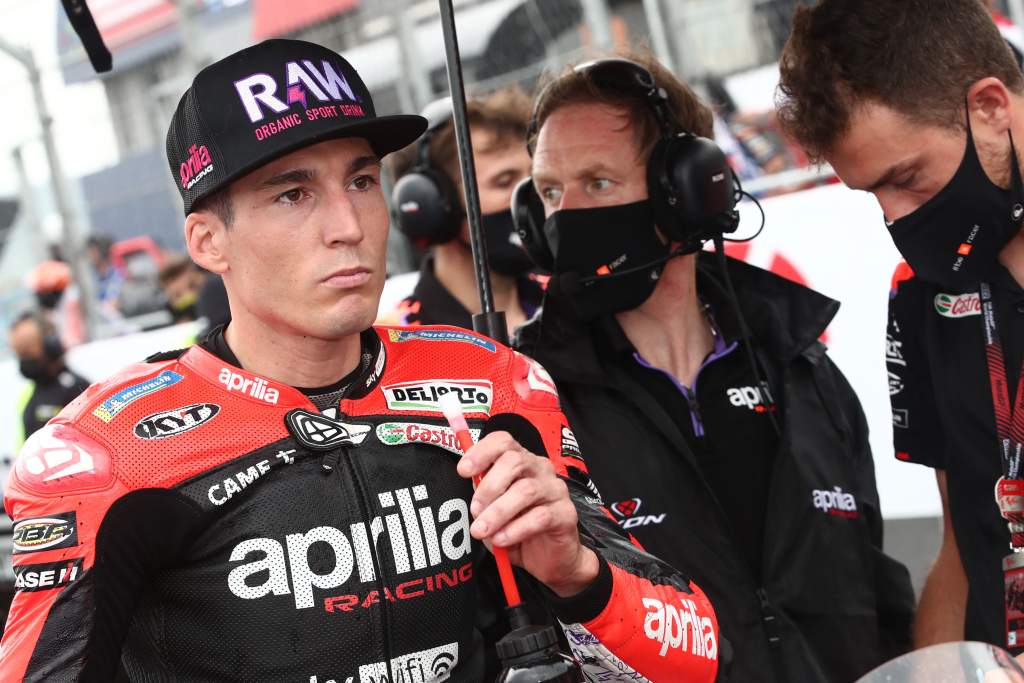Jack Miller had led the complaints among Ducati’s MotoGP riders about the ban of its front ride height adjustment device for 2023 – while Aprilia’s Aleix Espargaro had admitted Ducati is right to be irked, despite backing the ban as “a good decision”.
First introduced at the end of 2021 by Ducati as a natural extension of the rear ‘squat’ devices, the system locks the front suspension of the bike in a lower position to maximise power delivery on corner exits. Originally developed for the start of races (an area where motocross has used it for many years), it then evolved (like the rear system) into one that could be used mid-race by riders as they accelerate out of some bends.
However, it’s also prompted safety concerns from some riders, most notably six-time MotoGP champion Marc Marquez, who rallied the opposition against it at the opening race of the year in Qatar.

“For me, it’s something that in the future they must remove,” he insisted at the time. “I already said last year when I arrived back after my injury, and I think all the riders need to vote together.
“In the end, manufacturers always go more, more, more – but now with the holeshots and more stroke on the rear, there is more speed, more stress on the front.
“We’re always trying to increase runoff areas, and now we’re arriving faster to the brake points, we’re braking later because with the holeshots we can brake later. For the future, it makes no sense.”
That’s something that the powers that be agreed with, too, with MotoGP’s ultimate rule-making body the Grand Prix Commission overruling the Motorsport Manufacturers Association after the factory body couldn’t reach a unanimous decision.
The ruling means that from 2023, the devices will be limited to only being legal for race starts and not throughout the lap.

But, with the lone MSMA holdout manufacturer being Ducati, it’s perhaps no surprise that Miller has been at the forefront of criticising the ban, saying at this weekend’s Argentine Grand Prix that he believes his employer is being unfairly punished.
“I think the ban is unfair, in my opinion,” he said. “Even if we are using or not using the device, it doesn’t matter, because it seems like a lot of the other manufacturers… Ducati have spent money and time, more time than anything, developing this system, to make it work, to have it there. And when you go and do all that, it takes resources away from other areas of the bike that you could have spent the time and energy developing instead.
“At the end of the day Ducati isn’t a massive company like some of the other companies are, and for them to basically be able to come and complain and put in a rule like this but say that the rear [device] is still OK because the other teams were trying to do that at the beginning, to develop it too, that’s not fair. You can’t pick and choose which rules you want or don’t want.

“You can still use the front ride height device at the start, which I don’t understand. I think it’s a little pick-and-choose on the rules, and I don’t agree with the ruling.
“We have it there. We’ve worked to develop it and the others can either catch up or not. That’s up to them but you shouldn’t be able to tell a team what they can or can’t use if it’s inside the rules, without making up a rule to ban it.”
With one of the key problems for Ducati’s slow start to the season identified by the team as too much time spent during testing not working on set-up but rather trialling new parts like the ride height devices, satellite racer Jorge Martin was in agreement with Miller in his opposition to the ban.
“The problem is that we’ve spent a lot of time on this thing and developing it,” explained the Pramac Racing man, “and finally we won’t be able to use it next year.

“For the moment, I’m not even using it, but I think the main problem is the time we spent [on it] and didn’t spend on other things. I think in Malaysia on the second day [of testing] I did 20 laps because of it.”
While those riding for Ducati were never going to be happy about the decision, Aprilia man Espargaro – one of the longest-serving riders on the grid – made it clear he thought they had a good argument.
“I can really understand the position of Ducati,” he said. “They follow the rules, they invest money, they invest time – which is sometimes even worse than the money, because as they said it’s not just about the money, but the time they were developing the front height device they were not working on the engine, for example, or they were not working on another system.
“So… they’ve been the best ones to do this, but in terms of safety my point of view is that it’s not safe. So I think the championship has been good to ban this, but I can understand them [Ducati], I can understand that they are not happy, for sure.”

Espargaro was also quick to offer another argument for the ban, pointing out that, while MotoGP is essentially a research and development laboratory, ride height devices are something that’s completely irrelevant to road bikes.
“You can’t see them on the street bikes in the future, and MotoGP is the place to see how production bikes will go. You can spot on the new Aprilia RSV4 [road bike] with the wings we developed a few years ago, but I can’t see people on the street with this height device because it makes it very difficult to control the bike and every time you brake it changes the stability of the bike.
“If you see the new RSV4, you can see many things the same. The dash is very similar, we have the wings, many things. This is a test place, but for sure the front and rear ride height devices don’t have a place.
“It can cause a lot of problems, so for me they made the right decision. We’ll see how it affects us, because we did a good job developing the rear device in Aprilia and we were ready to have this one as well.”





